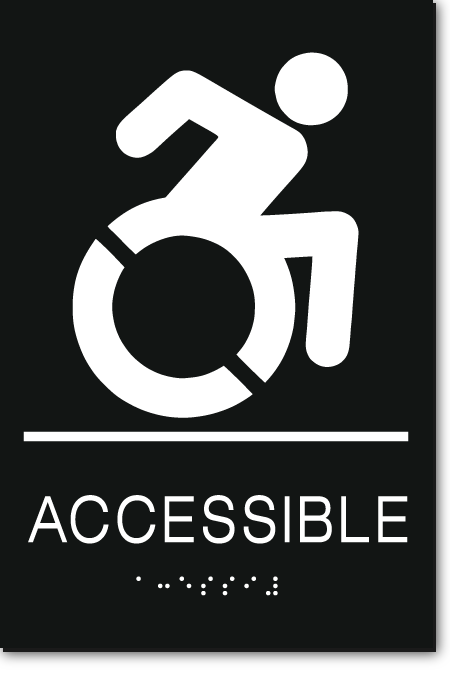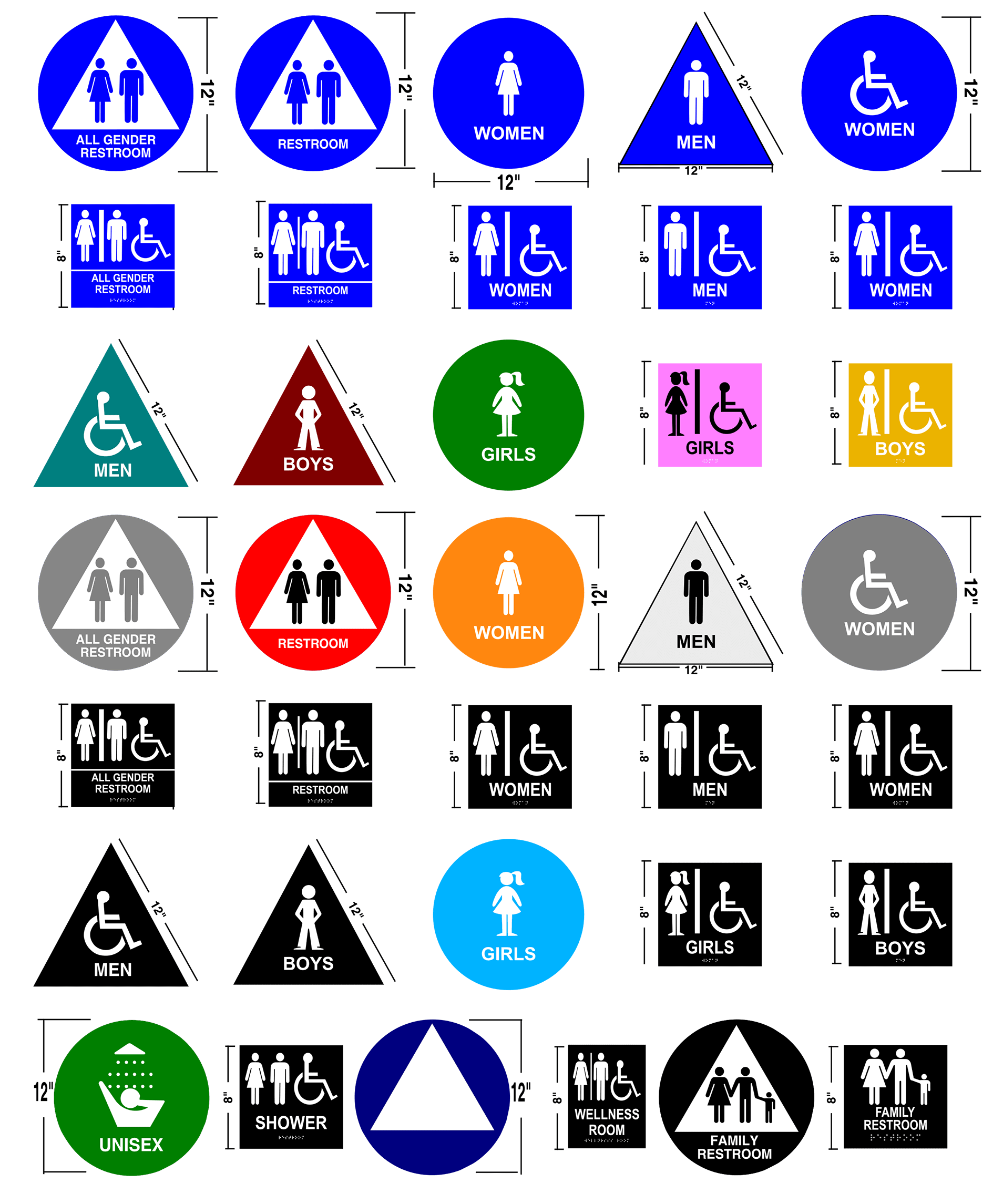The Influence of ADA Signs on Neighborhood Accessibility
The Influence of ADA Signs on Neighborhood Accessibility
Blog Article
Exactly How ADA Signs Transform Areas for Individuals With Handicaps
The makeover of spaces via ADA signs for people with impairments is an extensive testament to the power of access. By adhering to ADA conformity, environments come to be navigable and safe, with signs that attribute important elements like high-contrast colors and Braille, consequently enhancing exposure and understanding.

Relevance of ADA Compliance
Ensuring ADA compliance is not only a lawful obligation yet also a social commitment to inclusivity and availability. By sticking to the guidelines stated in the Americans with Disabilities Act (ADA), organizations show their commitment to producing environments where people with impairments can involve and browse without barriers. ADA compliance is vital in getting rid of discrimination, fostering equality, and promoting self-reliance for people with specials needs.
Organizations and public institutions profit considerably from ADA conformity. By ensuring facilities are available to everybody, companies can attract a more comprehensive consumer base, consisting of the 61 million Americans living with handicaps.
Additionally, ADA compliance is a foundation of global layout, which highlights creating areas that accommodate all individuals, no matter of their capacities. By applying certified signs and functions, companies add to a more fair culture, where all members can participate fully. Eventually, ADA compliance transcends legal responsibility, symbolizing a societal value that focuses on empowerment and level playing field for everyone.
Enhancing Navigation and Security
Browsing areas with self-confidence and safety and security is essential for people with handicaps, and ADA-compliant signs plays a pivotal role in attaining this goal. These indications are designed with certain functions to deal with the diverse needs of individuals with various specials needs, thereby facilitating smoother and more secure navigation throughout public and private spaces. By providing clear, standardized info, ADA indications reduce confusion and advertise a better sense of self-reliance for people who count on them.
The calculated positioning of ADA indications makes certain that important details comes to everyone, consisting of those with aesthetic, acoustic, or cognitive problems. Responsive and Braille components on indications help visually impaired individuals independently situate exits, washrooms, and various other crucial locations. In emergency situation scenarios, ADA indications add to reliable discharges by clearly marking emergency exits and routes, hence improving security for all occupants.
Furthermore, ADA-compliant indications cultivate a comprehensive atmosphere by dealing with the special navigation challenges encountered by people with disabilities. This not only help in their individual safety and security however likewise motivates engagement in social activities by promoting equal accessibility to public services and centers. Inevitably, efficient ADA signs transforms rooms right into obtainable, secure, and welcoming environments for everybody.
Features of Reliable ADA Indications
To develop efficient ADA indications, it is crucial to incorporate specific functions that attend to the diverse access requirements of people with handicaps. One critical attribute is the use of high-contrast shades, which substantially enhance exposure for individuals with visual disabilities.
An additional essential function is tactile components, such as elevated personalities and Braille, promoting access for visually damaged people. The raised characters must go to least 1/32 inch above the surface area, permitting simple touch reading. Braille needs to be placed straight listed below matching message, making certain uniformity and simplicity of navigating.
The placement of ADA indications is likewise important for their effectiveness. They must be mounted at a height in between 48 to 60 inches from the ground to additional reading ensure they are within reach for people in wheelchairs or those with mobility aids. In addition, indications ought to lie near doorways, elevators, and bathrooms, making sure that important information comes precisely when needed. By incorporating these functions, ADA signs can substantially improve wayfinding and availability for all.
Influence On Community Inclusion
ADA signs substantially contribute to neighborhood inclusion by making sure that public rooms are accessible and accessible for individuals with impairments. These indicators, designed in conformity with the Americans with Disabilities Act (ADA), feature tactile aspects, braille, and high-contrast shades, helping not just those with visual problems however a diverse variety of impairments - ADA Signs. Therefore, they play an essential role in developing environments where individuals with handicaps can get involved completely and individually in neighborhood life

In addition, ADA indicators assist companies and establishments fulfill lawful commitments, consequently stopping potential discrimination suits and improving their reputations as comprehensive entities. Eventually, ADA indicators are important tools in the continuous effort to construct even more fair and obtainable communities for everybody.
Future Trends in Accessible Signage
How will technological improvements shape the future of obtainable signs? The assimilation of sophisticated modern technologies assures to revolutionize how people with impairments communicate with their atmospheres. One promising growth is the use of electronic and wise signage that can dynamically change web content to cater to specific needs. For example, electronic signs equipped with sensing units and connectivity can communicate with individual devices to offer customized details, such as text-to-speech for visually impaired customers or streamlined graphics for those with cognitive handicaps.
Increased reality (AR) likewise holds considerable potential. AR applications can overlay electronic information onto real-world atmospheres, supplying users with improved navigational aids and contextual information (ADA Signs). This can be particularly advantageous in complicated settings like airports or huge public venues where typical signs may fall short
Another arising trend is the unification of Net of Points (IoT) modern technology to develop a network of interconnected indications. This allows for real-time updates and increased accessibility, adjusting to adjustments in the environment or individual demands. Additionally, with the growing emphasis on inclusivity, future guidelines may push for a lot more sophisticated signs remedies, guaranteeing global accessibility and promoting a much more inclusive society for all individuals.
Conclusion
ADA signs play a critical function in changing spaces for individuals with impairments by guaranteeing ease of access and advertising independence. Compliance with ADA criteria boosts navigating and security via the usage of high-contrast colors, responsive aspects, and Braille. These attributes this content foster community incorporation and encourage individuals by producing barrier-free environments. The constant advancement of available signs promises further advancements in inclusivity, ultimately enhancing the total experiences of people with handicaps and strengthening their feeling of belonging in neighborhood life.
The improvement of rooms via ADA signs for people with handicaps is an extensive testament to the power of ease of access.To develop effective ADA signs, it is vital to integrate specific features that address the diverse availability needs of individuals with handicaps.ADA signs significantly add to community incorporation by guaranteeing that public rooms are obtainable and accessible for individuals with impairments.By promoting the ease of activity and understanding within public spaces, ADA signs foster a feeling of belonging and empowerment among individuals with handicaps.ADA signs play an important role in transforming rooms for individuals with handicaps by making certain ease of access and advertising self-reliance.
Report this page